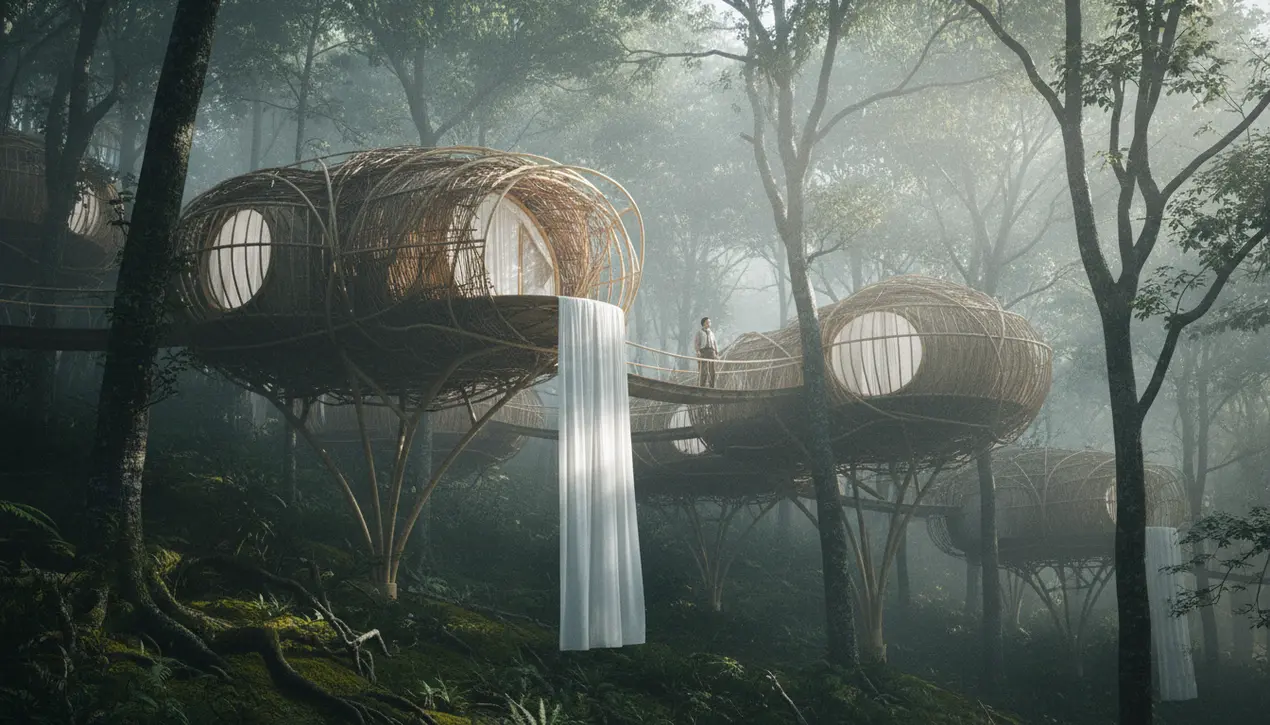
Otherreal estateSustainable Architecture
Modular forest nests propose model for prefabricated eco-resorts.
RA
Rachel Adams
3 hours ago7 min read
In the dense, mist-shrouded forests of southern China, a new architectural paradigm is quietly taking root, one that speaks not in the harsh concrete and steel of human imposition but in the fluid, organic language of the forest itself. The 'Modular Forest Nests' project, conceived by the design studio Doarchiwow, represents a profound shift in eco-tourism, drawing its fundamental inspiration from the intricate engineering of bird nests, the protective secrecy of insect cocoons, and the resilient, adaptive structures found throughout the natural world.This isn't merely a design aesthetic; it's a philosophical and practical commitment to biomimicry, translating biological intelligence into a scalable, prefabricated system of dwellings that appear to have grown from the forest floor rather than been placed upon it. The core innovation lies in its modularity—a system of interlocking components with fluid, non-rectilinear geometries that can be configured to suit specific topographies, from the steep inclines of Zhangjiajie National Forest Park to the riparian zones of the Yangtze River basin, minimizing site disturbance and preserving root systems.This approach directly confronts the legacy of destructive development in ecologically sensitive regions across Asia, where conventional resort construction often leads to habitat fragmentation, soil erosion, and a significant carbon footprint from material transport. By utilizing locally sourced, sustainable materials and a factory-based prefabrication model, the project drastically reduces on-site waste and construction time, offering a viable blueprint for how China, a nation grappling with the dual mandates of economic development and ecological restoration, can pursue its tourism ambitions without sacrificing its natural heritage.The concept echoes the pioneering work of architects like Glenn Murcutt, who championed 'touching the earth lightly,' but scales this philosophy for the 21st-century demand for immersive nature experiences. However, the success of such a model hinges on more than just elegant design; it demands a rigorous, science-based assessment of its long-term impact on local microclimates, soil health, and wildlife behavior.Will these nests, for all their benign appearance, alter the foraging patterns of native bird species or disrupt the delicate fungal networks—the 'wood wide web'—that sustain the forest? Engaging with ecologists and conservation biologists from institutions like the Chinese Academy of Sciences will be critical to ensuring these structures are truly symbiotic. Furthermore, the project's potential extends beyond China's borders, presenting a scalable model for prefabricated, low-impact eco-resorts in the biodiverse rainforests of Costa Rica, the temperate woods of Scandinavia, and other regions where the tension between tourism revenue and environmental preservation is acutely felt. The true test will be whether this vision can move beyond a compelling prototype and catalyze a broader industry shift, proving that the most luxurious and sought-after retreats are not those that dominate the landscape, but those that humbly, and intelligently, learn to live within it.
#modular architecture
#eco-resort
#prefabricated design
#biomimicry
#China
#featured
Stay Informed. Act Smarter.
Get weekly highlights, major headlines, and expert insights — then put your knowledge to work in our live prediction markets.
Related News
Comments
Loading comments...
© 2025 Outpoll Service LTD. All rights reserved.